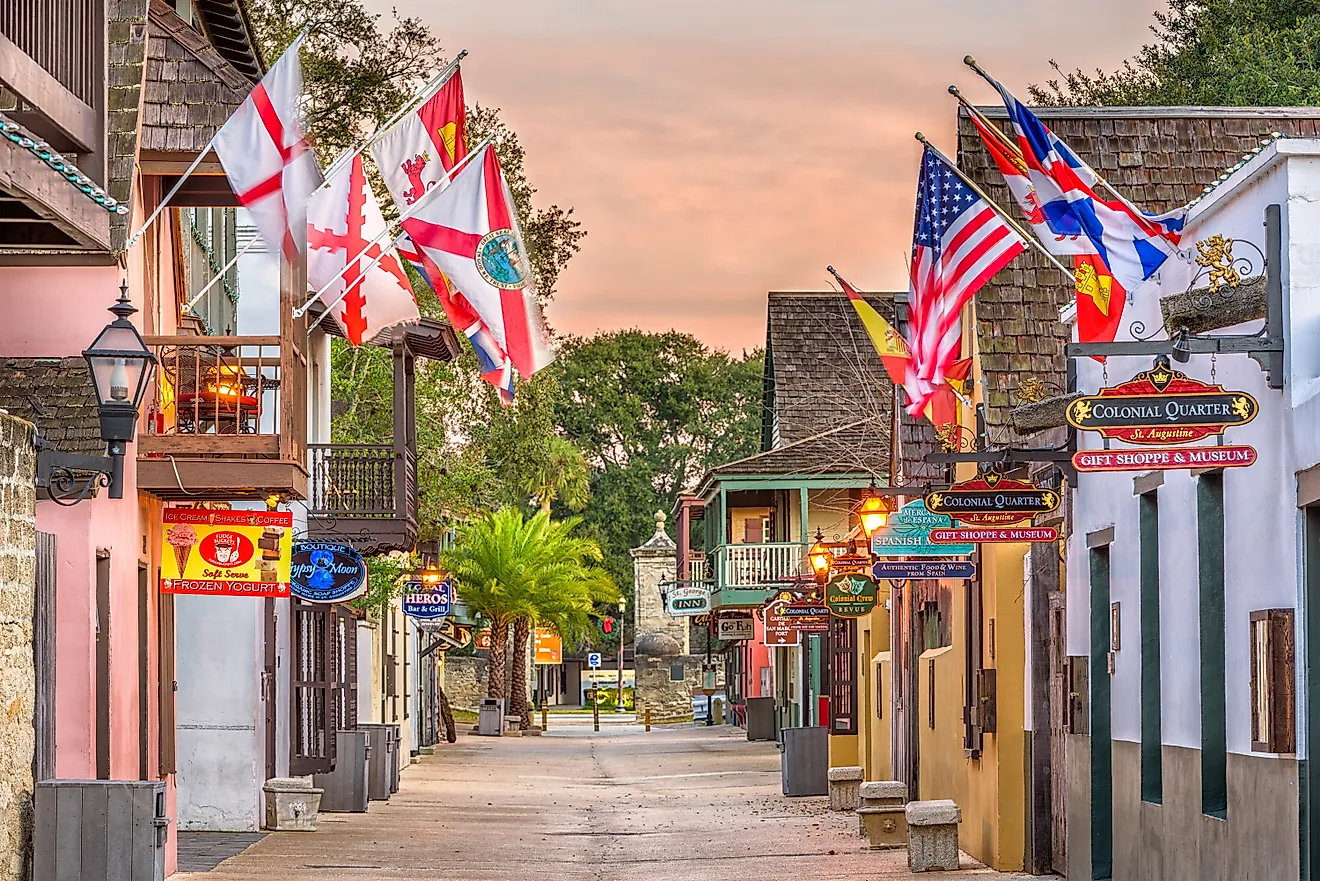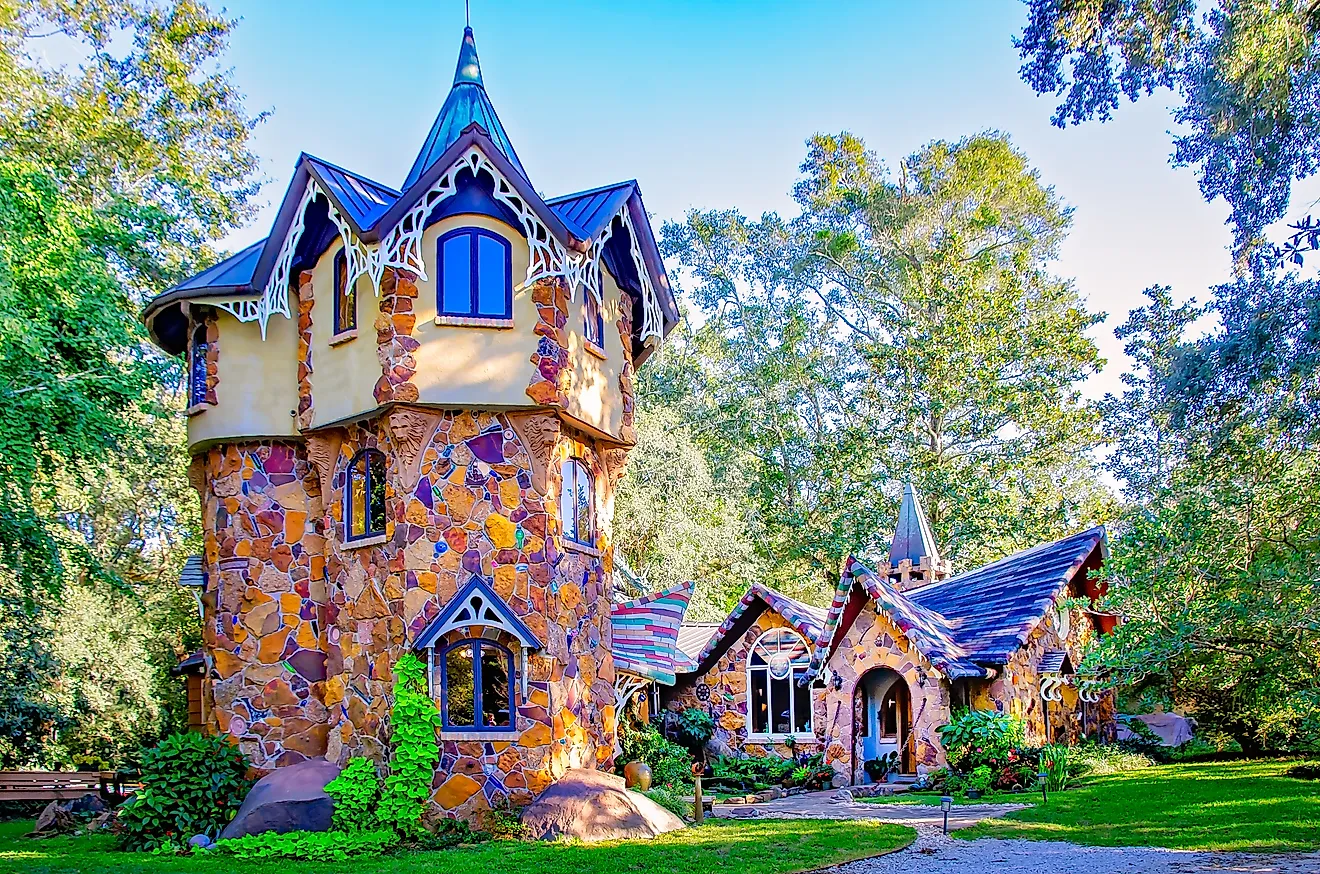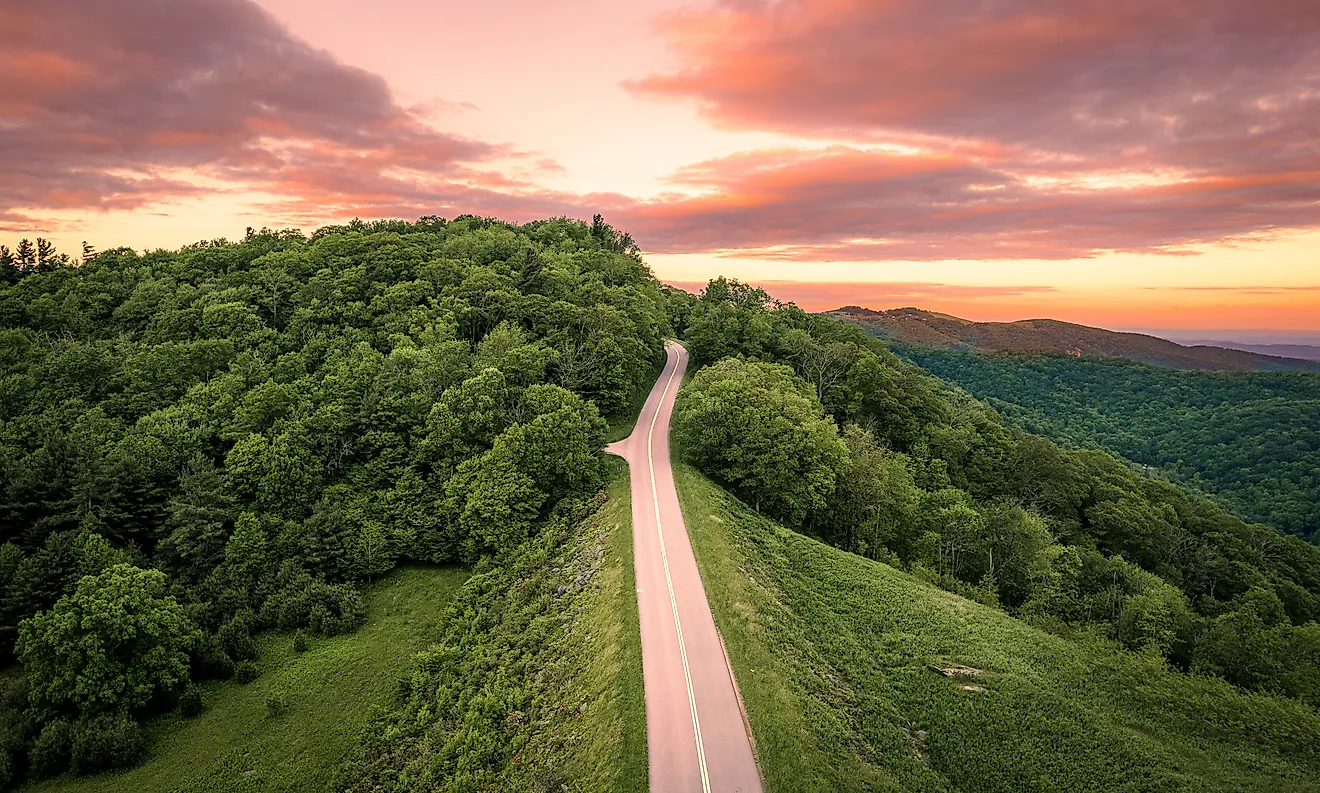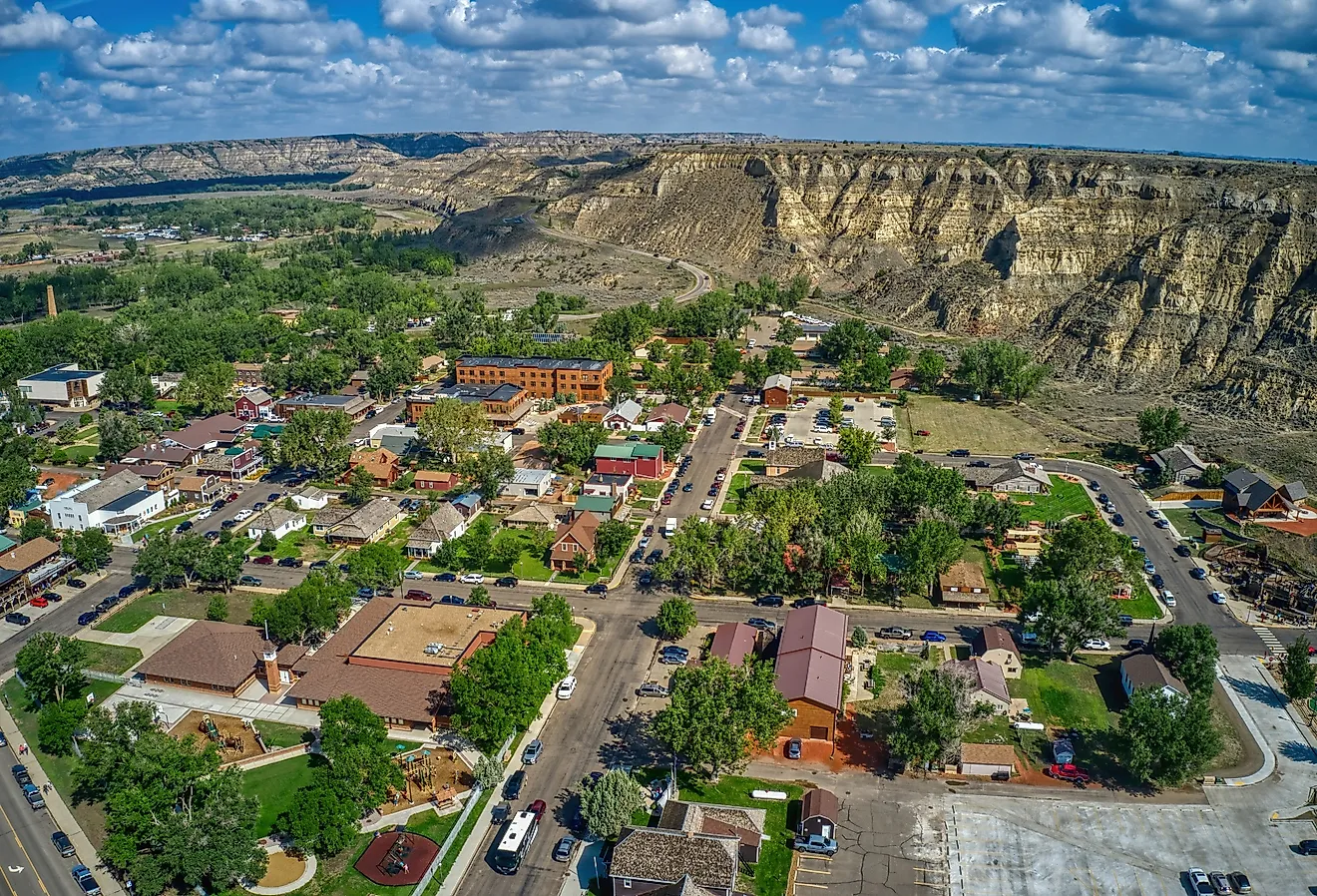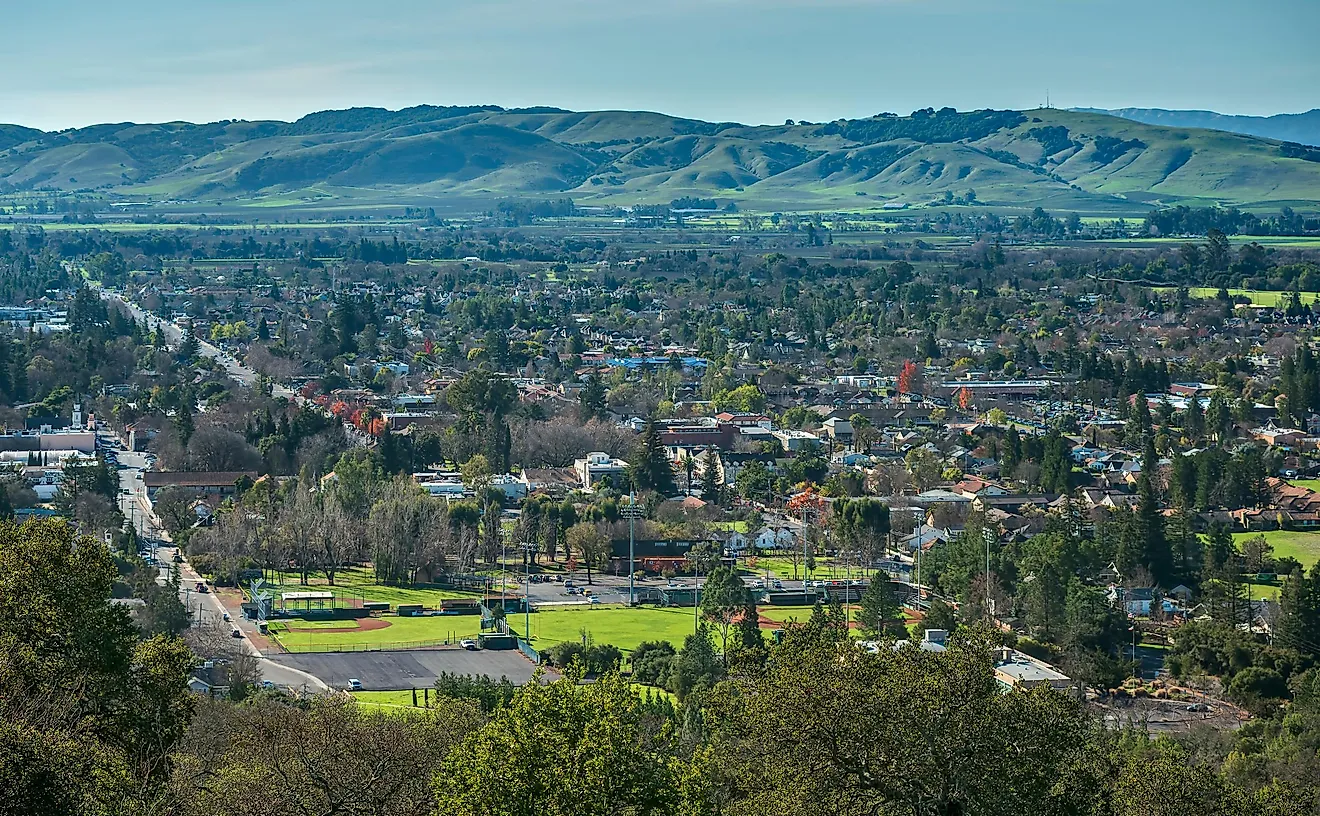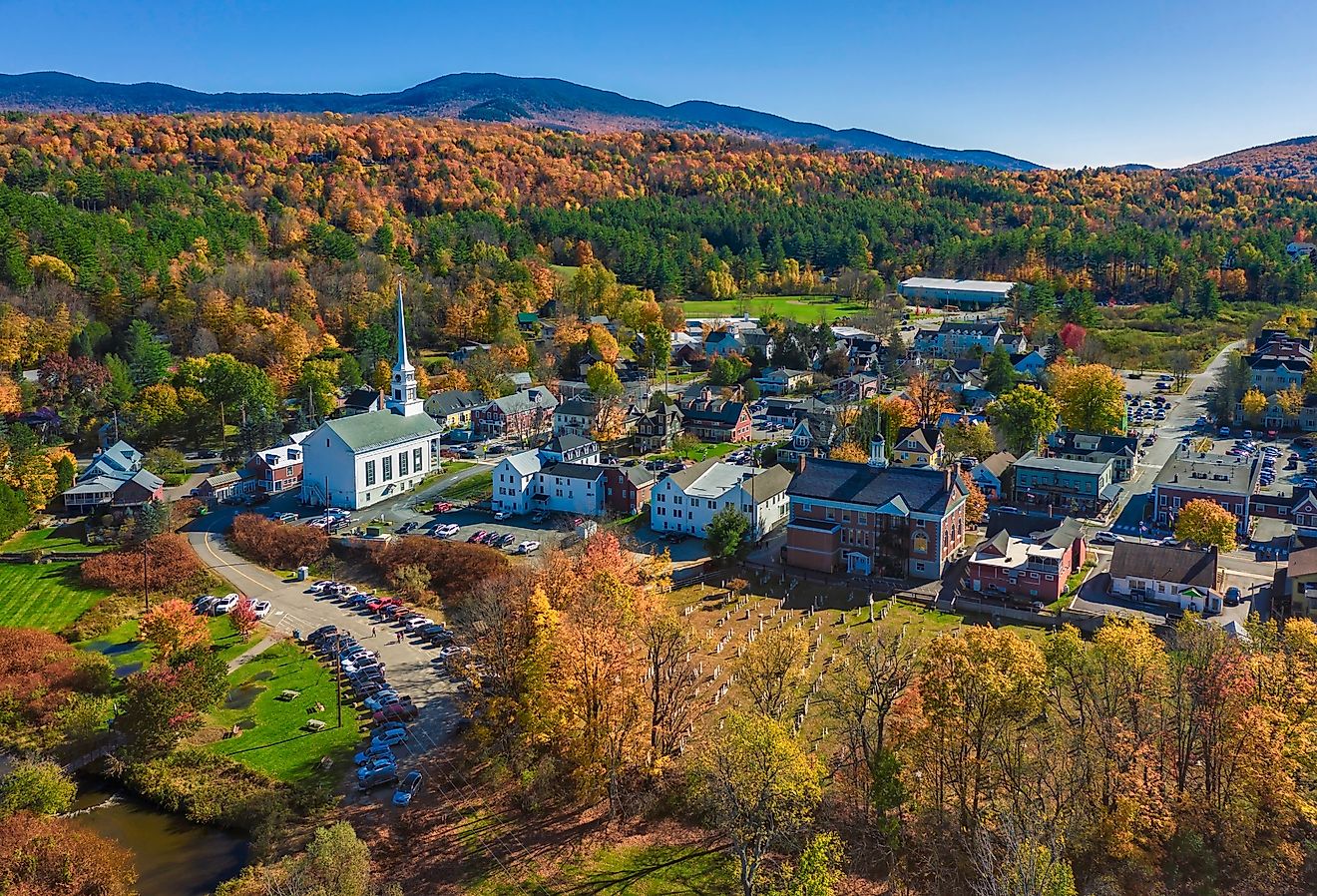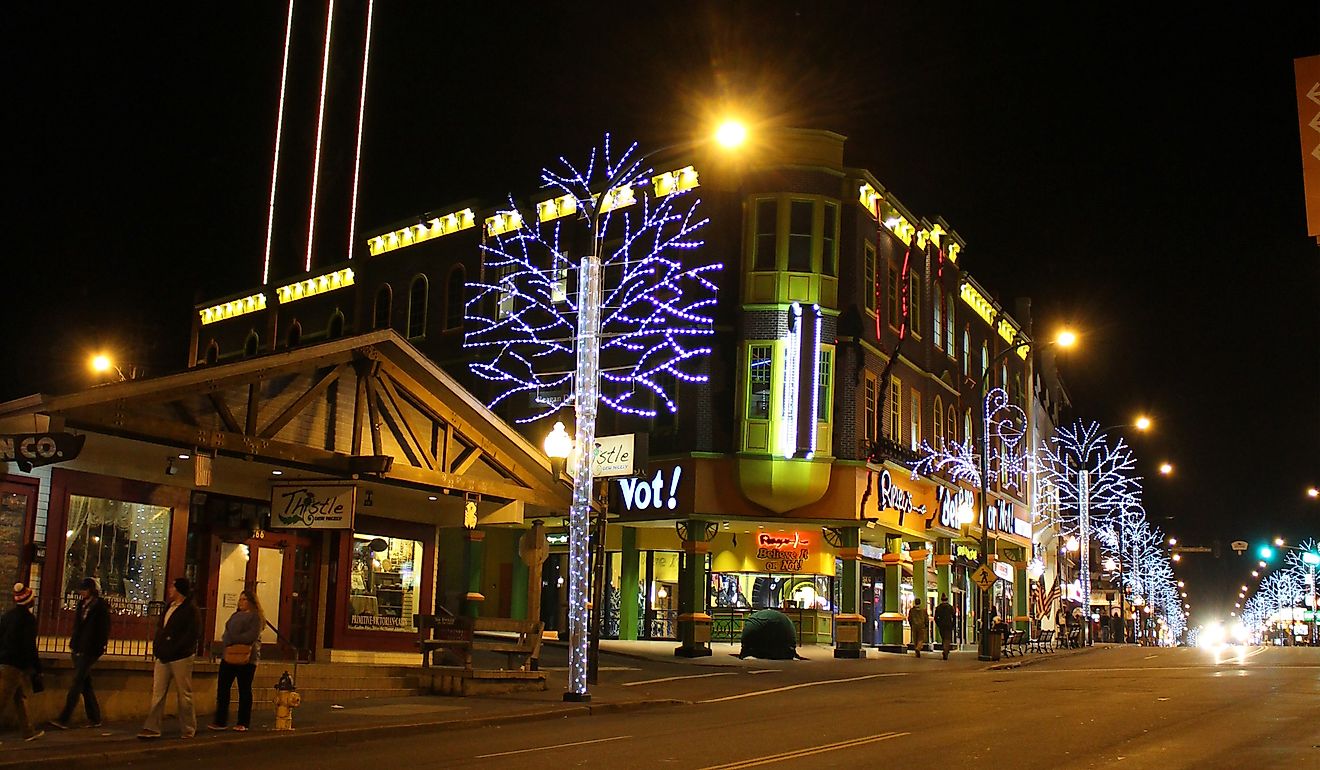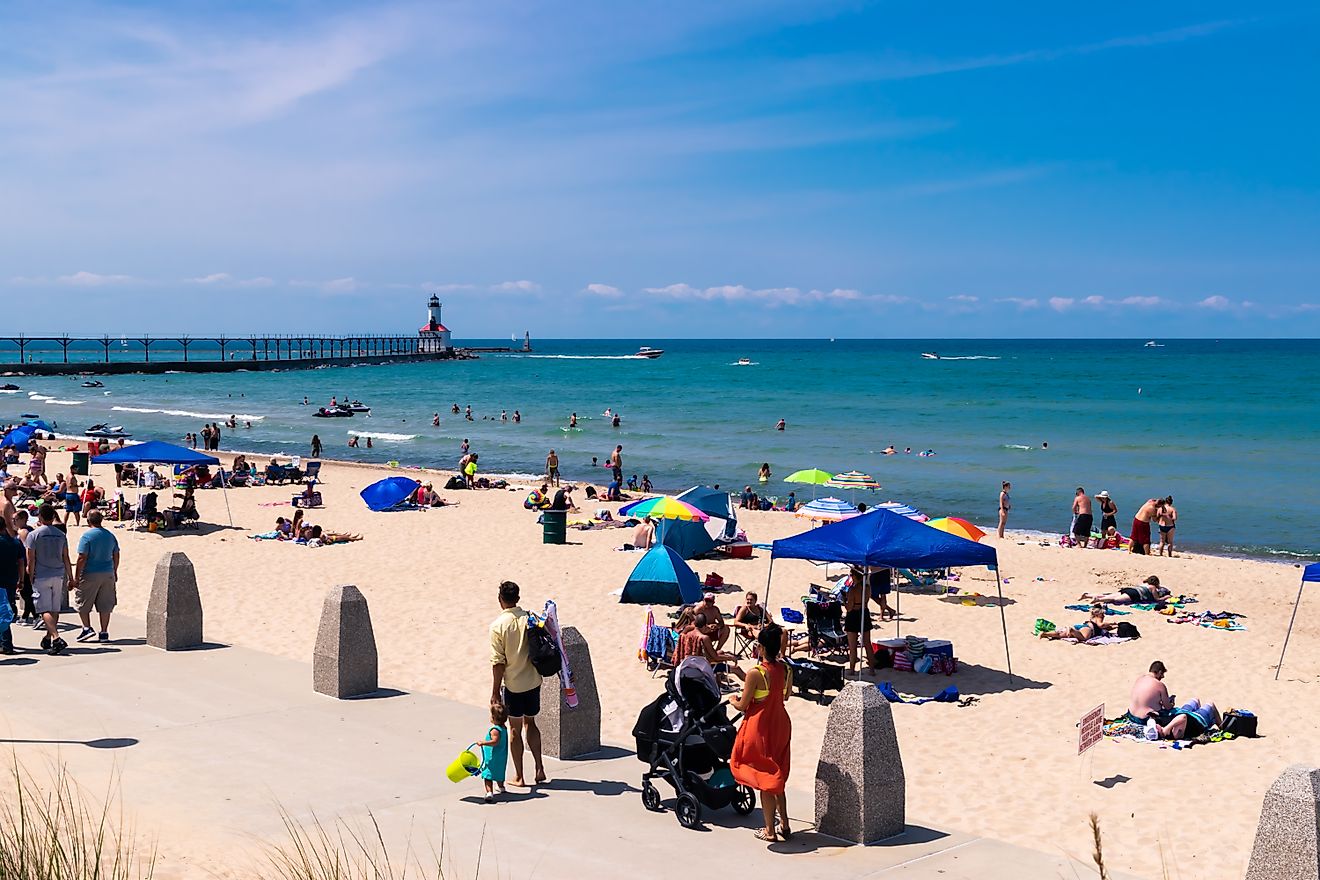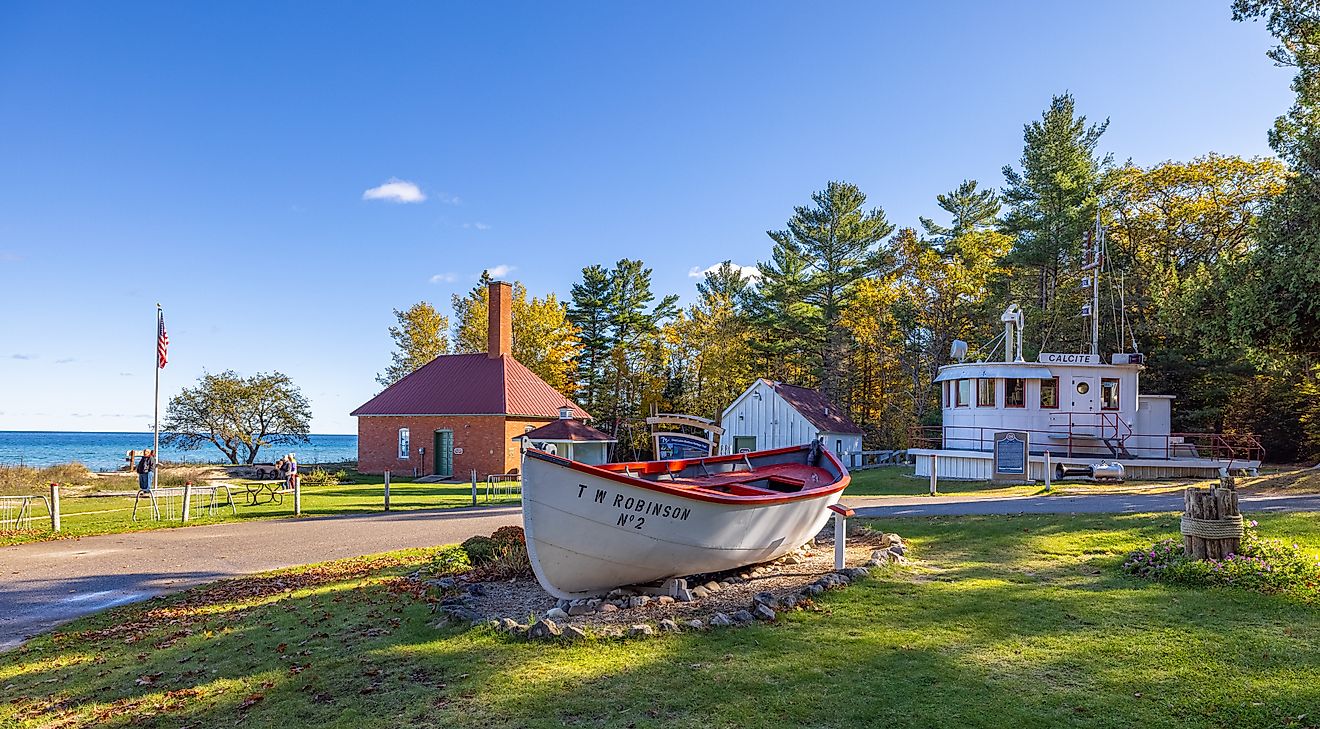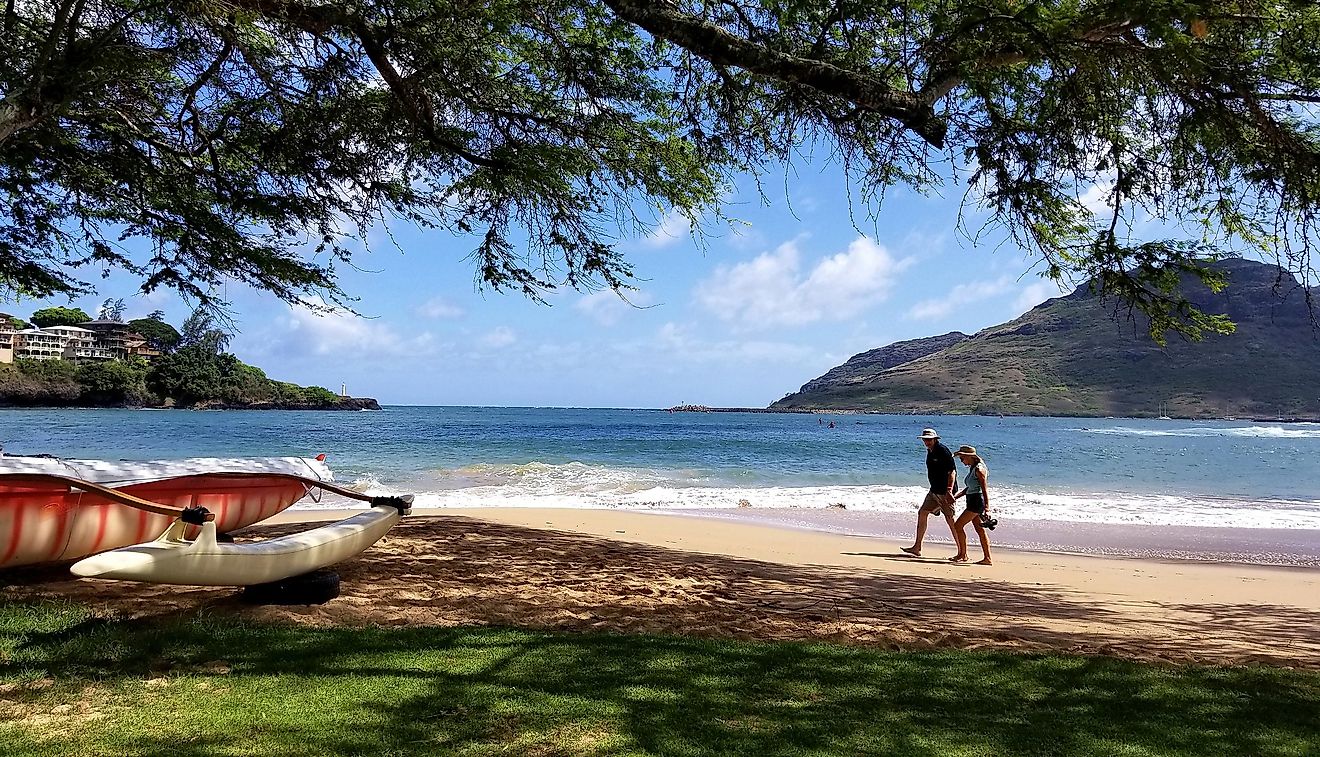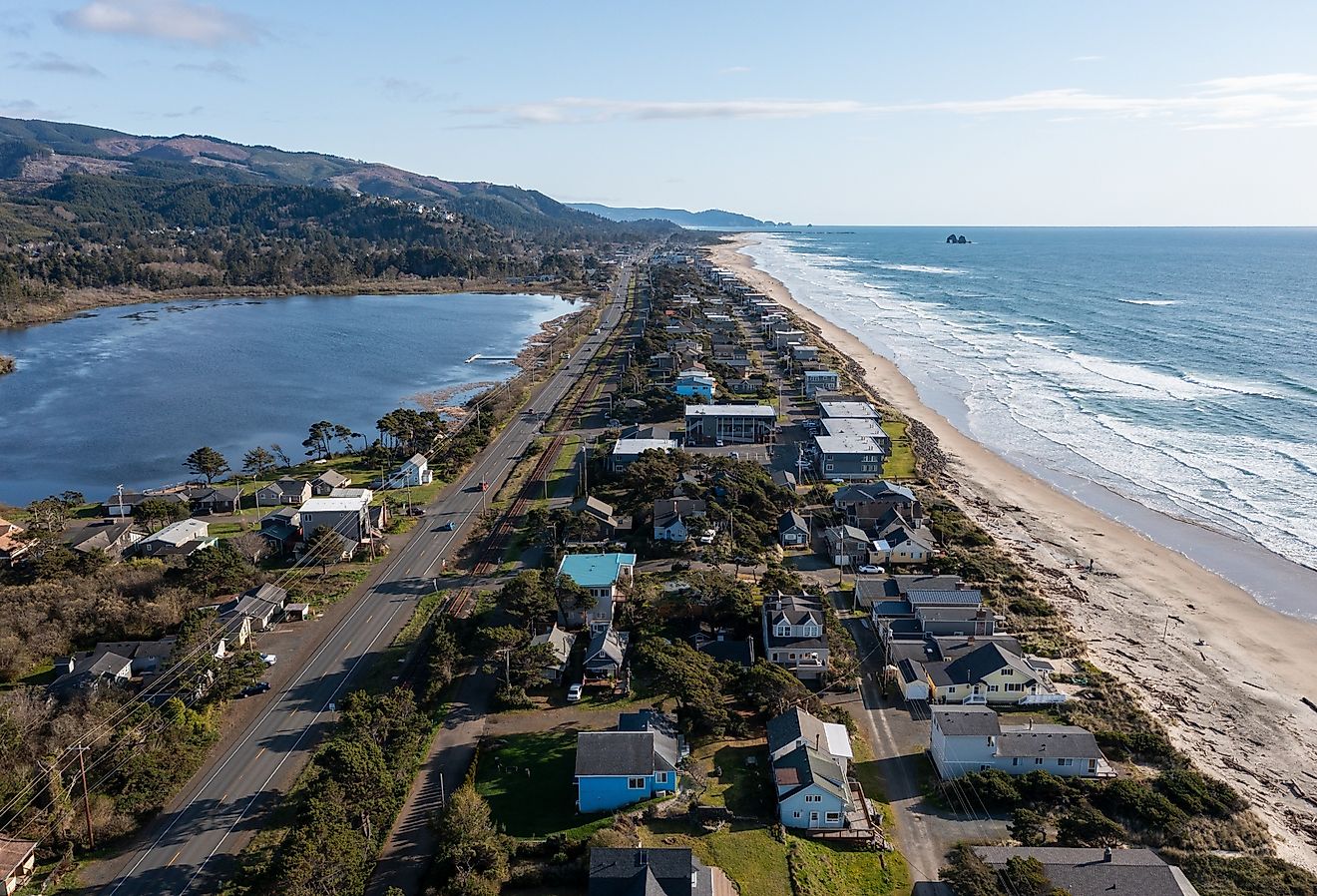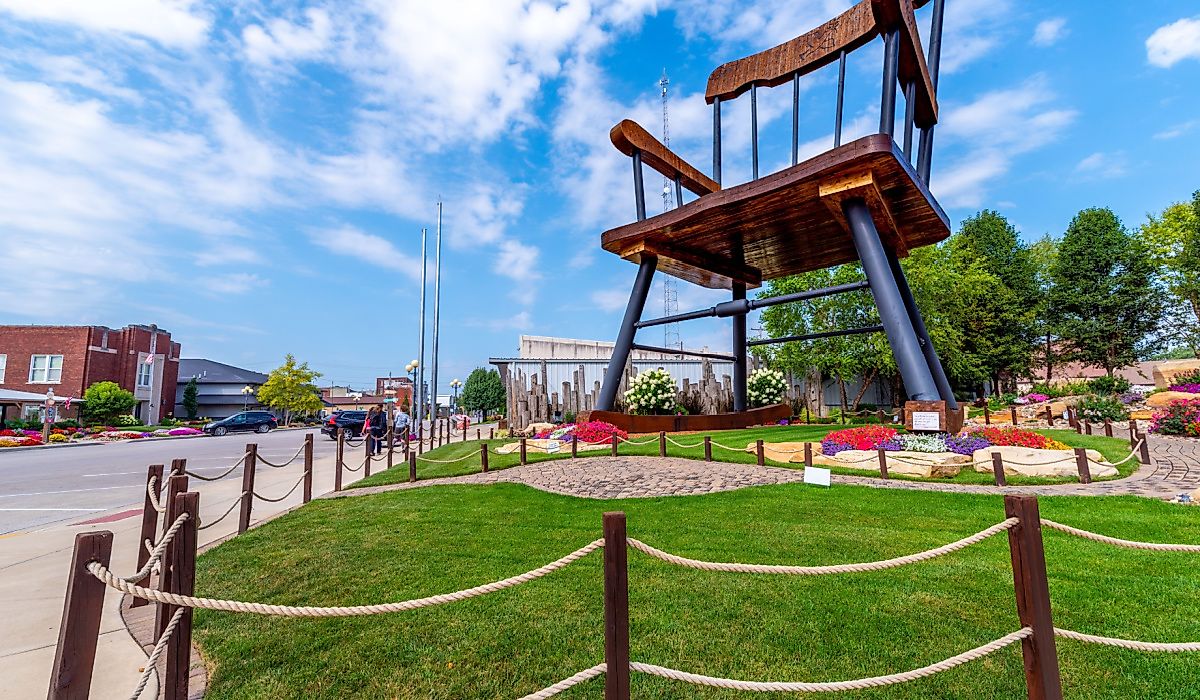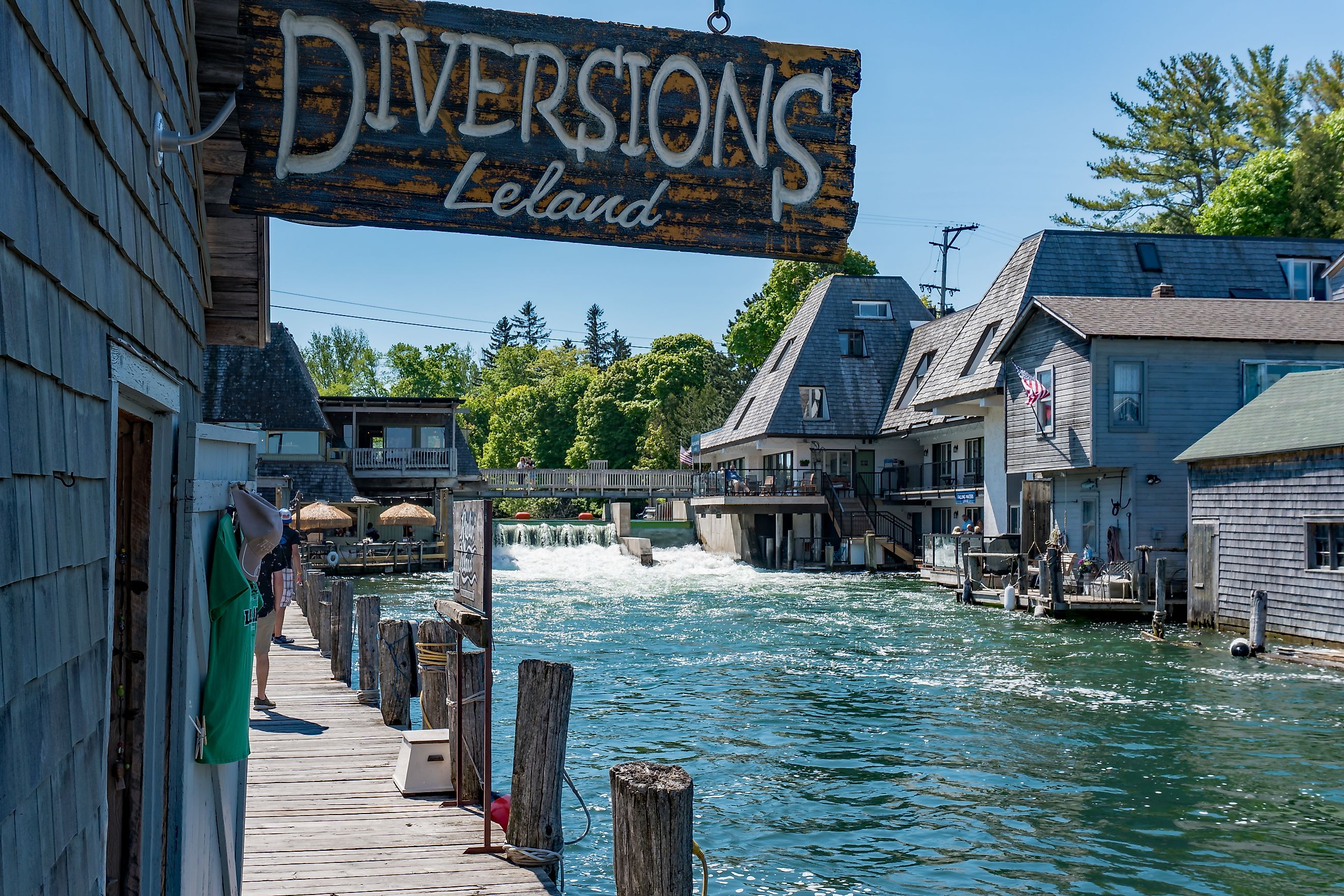
9 Of The Most Eccentric Towns In Michigan
Mighty Michigan is the Great Lakes State, bordering four of the five Great Lakes of North America. However, it is also affectionately known as the Mitten State, with the dominant peninsula forming a whimsical hand complete with an iconic “thumb.” This aspect of the state lends itself to the offbeat feel of some of Michigan’s innovative communities. Here are nine of the most eccentric towns in Michigan embracing the quirkier side of the state.
Grand Marais
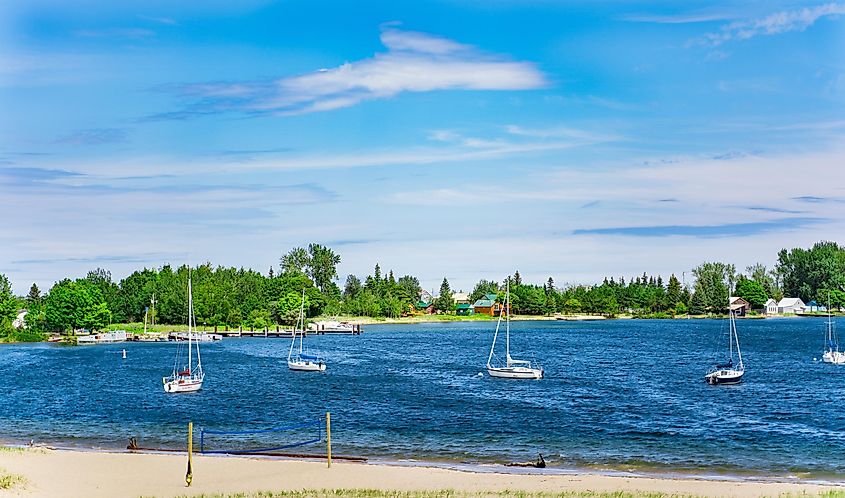
Located on the eastern edge of Pictured Rocks National Lakeshore, Grand Marais is known for its tranquil spot on the shore of Lake Superior. Although it is a desirable outdoorsy destination, it has a quirkier side.
The Pickle Barrel House was given to cartoonist William Donahey in thanks for his comic strip characters, the Teenie Weenies. The 16-foot barrel cottage represented the home of the whimsical characters and served as the summer retreat for William and his wife for about 10 years. The Jolly Barrel is a Michigan photo op offering tours of the period-appropriate interior.
The restored historic Lightkeeper’s House sits at the end of Coast Guard Point Road, along with two lighthouses still in operation. The Old Post Office Museum is a quaint five-sided building that was a former jewelry store that became the town's post office. After several incarnations, the building is now a walk-through museum depicting Grand Marais' history. The property's rose garden features Grand Marais photos taken by visitors and a haunting wind harp.
Pictured Rocks' beautiful sites provide unforgettable imagery to wind down your trip, including the windblown sandbanks at Grand Sable Dunes, the cascading 75-foot-high Grand Sable Falls, and the Log Slide Overlook with expansive views of Grand Sable Banks.
Owosso

Owosso is Shiawassee County’s largest city. It is best known as the birthplace of adventure writer James Oliver Curwood, or perhaps more accurately, the eccentric “castle” he called home.
The 1922 Curwood Castle seems better suited to a romance novelist than an adventure writer with its whimsical yellow façade, fairy-tale turrets, and French chateau charm. However, the castle’s highest turret served as Curwood’s writing studio until he died in 1927. Visitors can tour the museum and the surrounding grounds.
Shiawassee Arts Center showcases nine galleries featuring the work of local and national artists. The lovely Shiawassee River is dotted with parks and public spaces, ideal for peaceful paddling or bass and pike fishing.
DeVries Nature Conservancy’s serene trails take you through diverse landscapes with exceptional birdwatching opportunities. DeVries Historic Carriage and Sleigh Museum is also located on the conservancy grounds, where you can explore the collection of carriages, buggies, sleighs, and surreys.
The Steam Railroading Institute is a testament to steam-era railroading. While the institute features multiple steam and diesel locomotives and train-related artifacts, excursions on the famed Pere Marquette 1225 are the main attractions. Visitors experience the power of steam locomotives in operation on a series of exhilarating journeys.
The restored 1926 theater, Lebowsky Center for Performing Arts, offers first-class performances as the grand finale for your Owosso visit.
Charlevoix
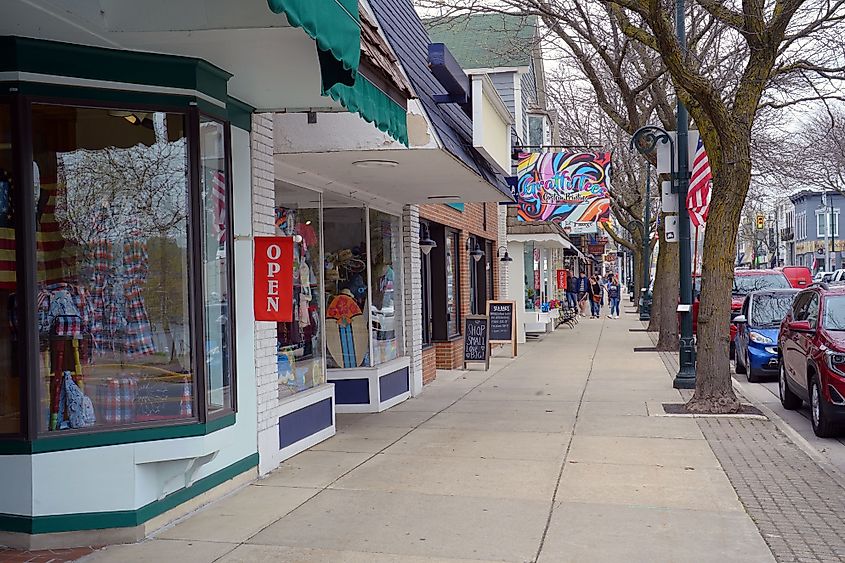
The town of Charlevoix is sandwiched between Lake Michigan and Lake Charlevoix. The beautiful harbor is not the only town attraction. Charlevoix’s enigmatic Earl Young homes offer a rare opportunity to appreciate the work of the self-taught architect. Known for his rogue designs, Young's homes and buildings feature enchanting characteristics, including the iconic wavy cedar roofs and stone façades affectionately known as “mushroom houses.”
A self-guided tour takes you to some of his most prized landmarks, including the Castle on Round Lake. Since the privately owned homes are not open to the public, downtown’s commercial sites provide a glimpse of Earl’s interior designs. Stafford's Weathervane Restaurant, Terrace Inn, and Hotel Earl are worth a visit. The Weathervane Restaurant’s random boulders stacked willy-nilly against the façade hint at the imposing fireplace within. Located in the dining room, the fireplace features a massive nine-ton glacial boulder capstone and an equally impressive meteorite on the lower right.
Charlevoix also claims to have the world’s biggest cherry pie. The concrete structure’s pie slice sits in an enormous tin pie plate. However, the neighboring town of Traverse City holds the official title of World’s Biggest Cherry Pie in the Guinness Book of World Records. You decide how each measures up!
Scenic inland and shoreline trails at Mt. McSauba Recreation Area, Charles Ransom Nature Preserve, or Fisherman’s Island State Park complete your Charlevoix adventure.
Ypsilanti
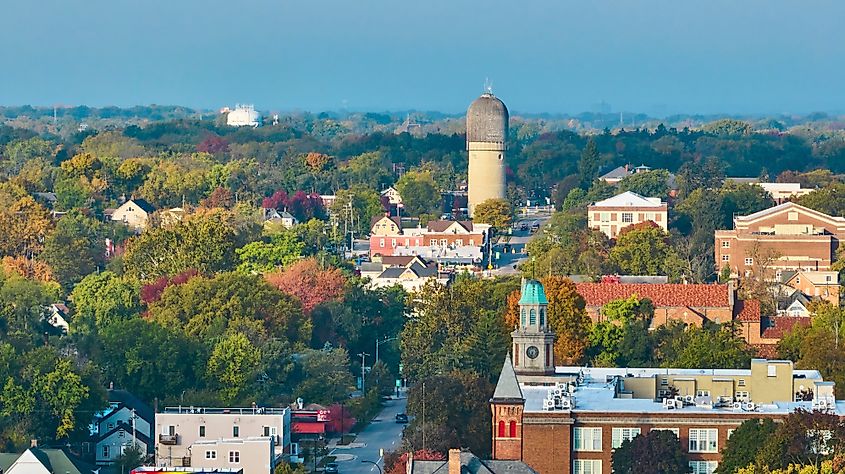
Known simply as "Ypsi" by locals, Ypsilanti sits along the banks of the Huron River. As an artist and college community, Ypsi’s funky downtown is home to many galleries, including those found on the campus of Eastern Michigan University. The University Gallery features major exhibitions and events, while the IGG Gallery showcases student work. The Ford Gallery combines student and outside artist exhibitions, featuring fresh new work throughout the year.
However, the town is known for a somewhat embarrassing landmark. Once deemed the world’s most phallic building by Cabinet Magazine, the Ypsilanti Water Tower is a brick wonder. The Queen Anne architecture reflects the style of the late 1880s and features four crosses carved into the building by superstitious construction workers. Snap a picture with the bust of the town’s namesake, Greek war hero Demetrios Ypsilantis, and climb the tower steps to take in the views.
Ypsilanti's Black history is celebrated through open-air murals, landmarks, and sculptures, including Elijah McCoy's "The Real McCoy," the Black Heritage Signage Project, and art dedicated to the women from Ypsi's history.
Cross Village
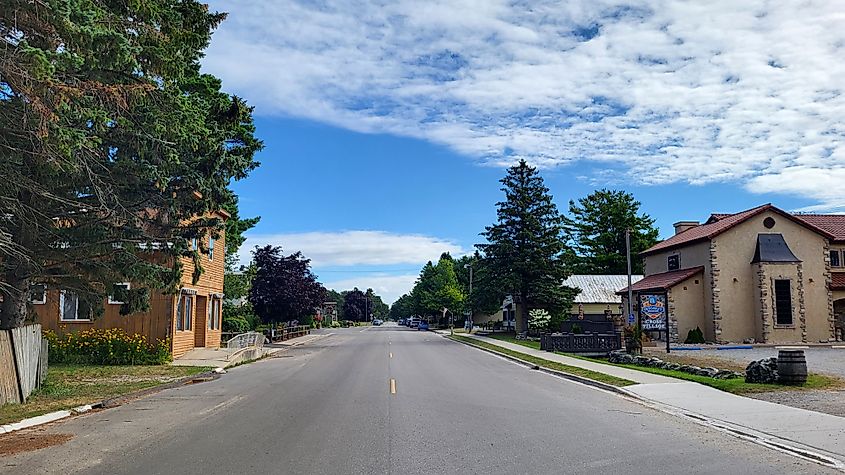
Cross Village is the final stop when exploring Michigan’s iconic Tunnel of Trees. The beautiful canopy stretches about 20 miles along M-119. The charming roadway transforms from summer’s shady green to brilliant reds, oranges, and yellows in the fall. This frequently traveled route is home to the second-most iconic Restaurant in Michigan, Legs Inn.
Operated by the same family for over 90 years, the inn’s local river stone and driftwood façade offers a taste of its unusual interiors. Polish immigrant Stanley Smolak's creative notions and fantastical creature carvings adorn his handcrafted furniture and interior details. An intricately carved balcony and Native American-inspired totem poles overlook the tavern. Diners enjoy home-cooked Polish cuisine in the back garden with views of Lake Michigan’s shimmering waters. The experience is pure Michigan.
A self-guided historic walking tour explores 10 historic sites, including the L'Arbre Croche Museum. This catchall of the town’s history includes the Odawa (Ottawa) people, the local lumber industry, and the village founders. Nature lovers enjoy the Cross Village Nature Trail, trekking through the mature wooded areas and shaded forest floors, offering shelter for many birds, local wildlife, and rare species of orchids. Pretty wildflowers dot the meadows, while remnants of stone fences mark the remains of century-old boundary lines.
The Cross Village Beach attracts swimmers to its serene, clear waters, while the soft sandy shoreline invites you to enjoy quiet time and take in the views of Lake Michigan and its picturesque surroundings.
Frankenmuth
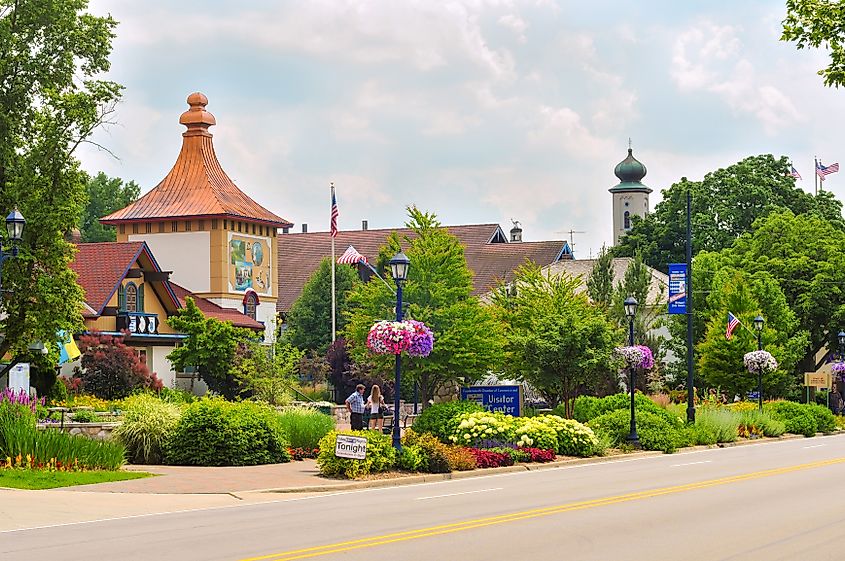
Distinct German influences dub Frankenmuth as Michigan’s Little Bavaria with its eccentric European flair. Located on the “thumb” of Michigan’s Lower Peninsula, Frankenmuth overlooks the scenic Cass River. Tours aboard the authentic paddlewheel riverboat, the Bavarian Belle, offer a unique way to take in the town’s whimsical charm.
Absorb Frankenmuth’s German heritage at the iconic 1968 landmark, Frankenmuth Cheese Haus. The colorful 74-foot Figurinespiel Tower, with animated figures representing different world cheeses, tells a charming story every 10 minutes.
Learn more about Frankenmuth's German roots at the Frankenmuth Historical Museum, or take a self-guided tour visiting the town's most iconic locations and establishments.
Visit the largest Christmas-themed store in the world, historic Bronner’s Christmas Wonderland. The beautifully landscaped grounds cover 27 acres and feature 100,000 outdoor lights. They shine every evening, instilling the spirit of the season even in the middle of summer.
Venture out onto the peaceful Cass River, paddling along the riverbanks, or take a leisurely stroll along the Frankenmuth Riverwalk before heading home.
Saugatuck
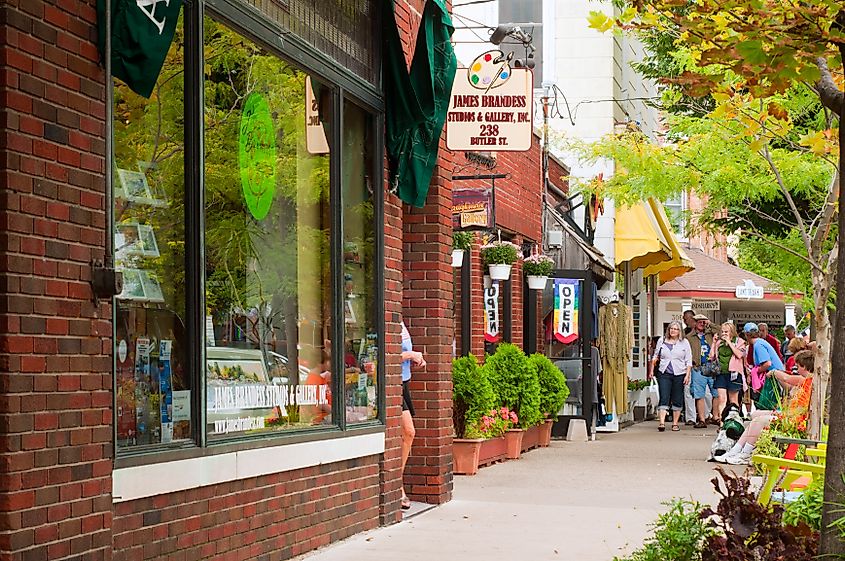
Saugatuck sits at the mouth of the Kalamazoo River, where it empties into Lake Michigan. As part of Michigan's Art Coast, it is no surprise that the town features a prominent open-air painting. Artist Carol Miron's reproduction of the famous George Seurat painting “Sunday Afternoon on the Ile de La Grande-Jatte” camouflages Wicks Park’s facilities. Saugatuck’s Seurat still stands despite the arrival of new restrooms.
The Saugatuck chain ferry is a river tradition. Although the “Diane” is not the original 1857-era boat, the 1960s ferry uses a hand-cranked chain to transport people back and forth across the river.
The ferry takes you to the steps leading up Mount Baldhead, an impressive 200-foot dune. The observation area sits at the top of 303 wooden steps, affording stunning views of the river and Lake Michigan. Take the Mount Baldhead Trail to the award-winning Oval Beach, where pristine white sands form impressive dunes and meet the lapping waves of Lake Michigan.
The riverfront garden at the History Museum at Mount Baldhead Park features six learning stations explaining the various views from the grounds. A ferry boat ride back to town is the perfect finish to your Saugatuck visit.
Leland
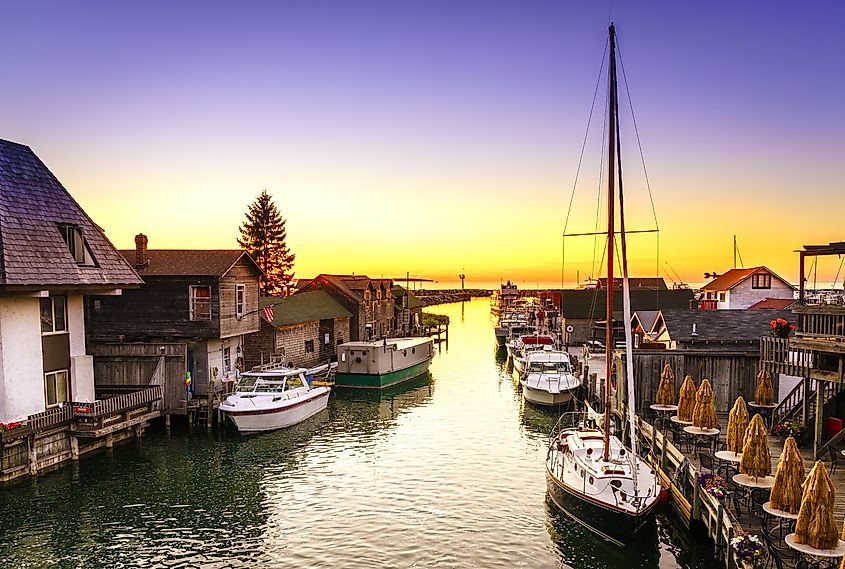
Leland sits on the Leelanau Peninsula, between Lake Michigan and Lake Leelanau. The town is known for its historic “Fishtown.” The collection of ramshackle, weatherworn wood structures includes fishing shanties and smokehouses with overhanging docks along the Leland River. The working waterfront is one of Michigan’s only unmodernized operating commercial fishing villages.
The old fish tugs create a charming picture along the canal, which connects the present with the historic maritime culture of the Great Lakes. The narrow streets date back 150 years and now house modern shops and eateries, including the fifth-generation fish market and smokehouse, Carlson’s Fishery.
The town takes its history seriously, going to excessive lengths to preserve the stump of its oldest tree. The Leland Champion Cottonwood Tree stands at the gateway to Fishtown and is the only remnant of the once-towering cottonwood. The large stump is a testament to the tree’s former mighty height, reaching 100 feet tall.
The Leelanau Preservers Tile Wall sits in the town center, featuring 500 beautifully crafted tiles honoring contributors to the Leelanau Conservancy. The Conservancy and National Park Service work to preserve the trails of the peninsula. Visitors can enjoy the stunning bluffs and views of Lake Michigan and Leelanau at Clay Cliffs or climb the 300-foot Whaleback bluff overlooking the Manitou Passage, Pyramid Point, and the Manitou Islands. The Houdek Dunes sandy trails and deck overlook Houdek Creek, while the Empire Bluffs offer spellbinding vistas of the shimmering water and distant South Manitou Island.
Ishpeming
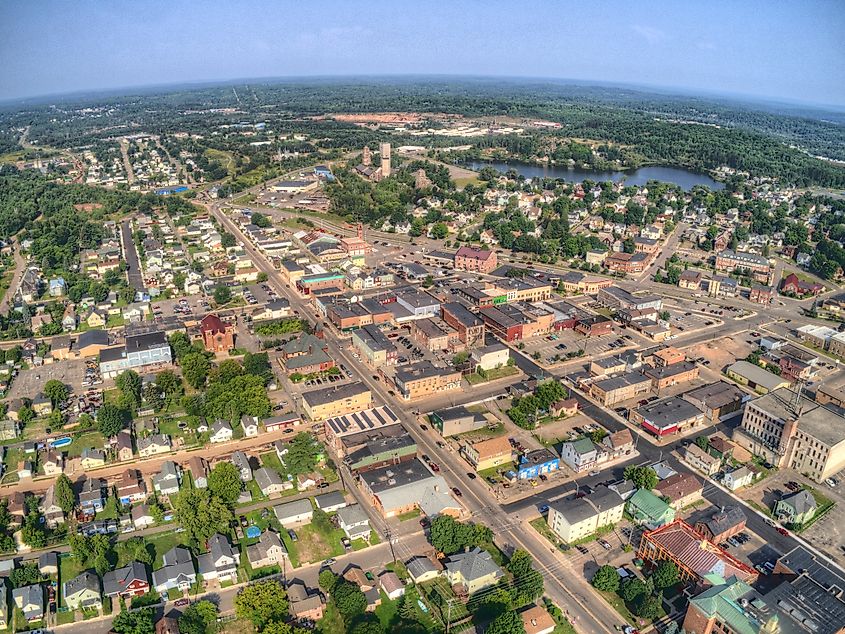
Ishpeming is an iron mining town on Michigan’s Marquette Iron Range. It is a popular stop-off for travelers exploring Michigan’s Iron Ore Heritage Trail.
Da Yoopers Tourist Trap is a popular, lighthearted roadside attraction celebrating Michigan’s eclectic sense of humor. The site is the brainchild of the original members of the Upper Peninsula comedy troupe Da Yoopers. Their collection of Yooper innovations includes a 1957 Buick with a snowplow dubbed Christine On Steroids, Big Gus, the world's largest working chainsaw, and Big Ernie, the world's largest working rifle.
Distinct obelisks mark the site of abandoned mine shafts at Cliffs Shaft Mine Museum. History buffs can tour the property and exhibits, offering insights into mining life.
Jasper Knob is a 50-foot bluff sporting stripes of gray iron ore and vibrant red jasper quartz. The formation has both historic and natural significance. Its discovery in the mid-1800s attracted investors anxious to access the valuable resources. Marquette Iron Company's title to the knob revealed the rock's worthlessness. The summit’s distinct stripes and breathtaking views are now a popular stop along the Iron Ore Heritage Trail.
Ishpeming is a short drive from impressive rock formations, cliffs, and waterfalls, including Lover's Leap, Chapel Rock, Grand Portal Point, and Miners Falls.
Michigan boasts some of the country's most compelling landscapes. Sandy beach-lined shores kiss shimmering turquoise waters. Massive rock formations and cliff faces give way to cascading waterfalls and breathtaking views. Peaceful rivers wend their way through silent forests before emptying into the immense lakes. Set against these immaculate landscapes, the eccentric towns of Michigan offer unique experiences for character-filled travels throughout the Great Lakes State.
